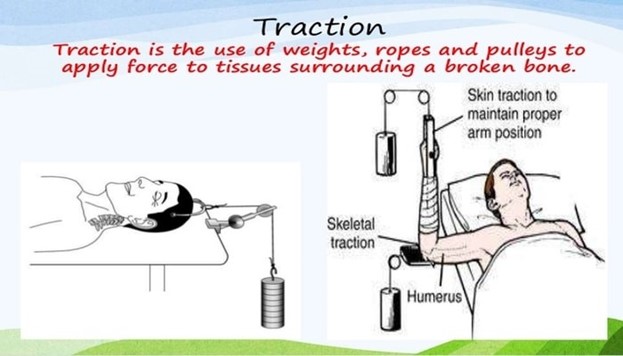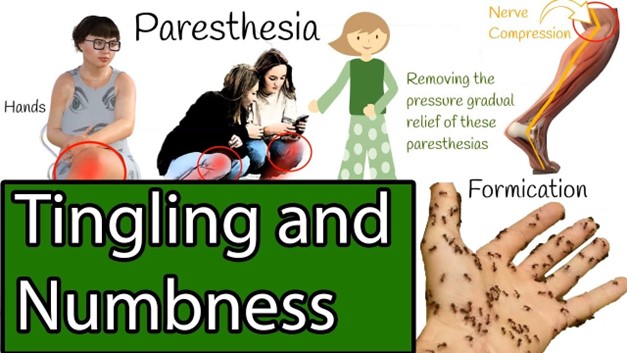An infant suffered from a fracture of the humerus and requires traction that uses pins, wires, and tongs.
What type of traction is this?
Skeletal traction.
Muscle traction.
Joint traction.
Skin traction.
The Correct Answer is A
Skeletal traction is a type of traction that uses pins, wires, or tongs to apply a pulling force directly to the bone.
This can help align and stabilize a fracture while it heals.

Choice B is not the best answer because muscle traction is not a type of traction.
Choice C is not the best answer because joint traction is not a type of traction.
Choice D is not the best answer because skin traction uses adhesive strips or elastic bandages to apply a pulling force to the skin, rather than directly to the bone.
Nursing Test Bank
Naxlex Comprehensive Predictor Exams
Related Questions
Correct Answer is D
Explanation
B. This is the vaccine for hepatitis B, a viral infection that can cause liver damage and cancer.
The CDC recommends that all newborns receive the first dose of this vaccine within 24 hours of birth, followed by two more doses at 1 to 2 months and 6 to 18 months of age.
Choice A.
MMR is incorrect, as this is the vaccine for measles, mumps, and rubella, which is not given at birth but at 12 to 15 months and 4 to 6 years of age.
Choice B.
Varicella is incorrect, as this is the vaccine for chickenpox, which is also not given at birth but at 12 to 15 months and 4 to 6 years of age.
Choice C.
DTaP is incorrect, as this is the vaccine for diphtheria, tetanus, and pertussis (whooping cough), which is not given at birth but at 2, 4, 6, and 15 to 18 months and 4 to 6 years of age.
Therefore, choice D is the best answer to this question.
Correct Answer is C
Explanation
Paresthesia refers to an abnormal sensation of the skin, such as numbness, tingling, or burning.
When the nurse observes for diminished or absent sensation and numbness or tingling, they are monitoring for paresthesia.

Choice A is not correct because pain is not the symptom being monitored in this case.
Choice B is not correct because paralysis is not the symptom being monitored in this case.
Choice D is not correct because pallor refers to the paleness of the skin and is not the symptom being monitored in this case.
Whether you are a student looking to ace your exams or a practicing nurse seeking to enhance your expertise , our nursing education contents will empower you with the confidence and competence to make a difference in the lives of patients and become a respected leader in the healthcare field.
Visit Naxlex, invest in your future and unlock endless possibilities with our unparalleled nursing education contents today
Report Wrong Answer on the Current Question
Do you disagree with the answer? If yes, what is your expected answer? Explain.
Kindly be descriptive with the issue you are facing.
